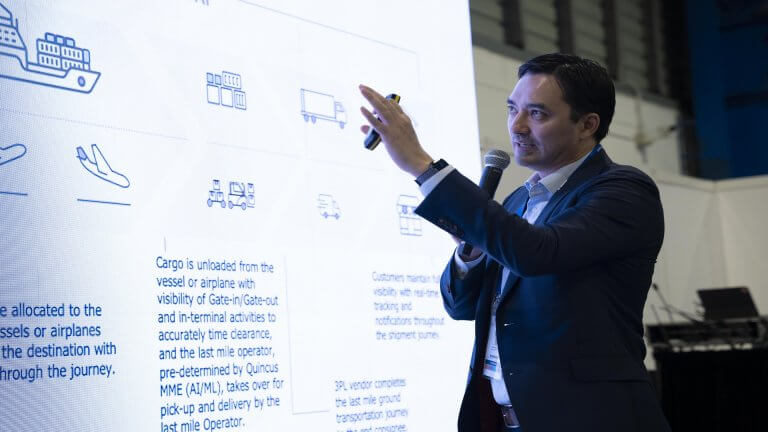
Q&A: Why Do We Need a Pricing and Costing Engine
The right pricing strategy makes all the difference–research has shown that it is the quickest and most effective way for a logistics company to boost profits. However, as with many supply chain processes, pricing and costing remains a largely manual affair, driven by teams of analysts and sales personnel. This often translates to suboptimal response times when faced with sudden market fluctuations, and a lack of visibility around where cost centers are on a route-by-route basis.
Given the outsize effect it can have on profitability, pricing and costing makes perfect sense as a candidate for digitalization and automation. Quincus Product Manager Yue Su Xian shares with us what a pricing and costing engine is, why supply chains need it, and what logistics providers should look for in one.
In one sentence: what is a pricing and costing engine?
A smart and clean toolset that enables the user to predict and populate pricing and costing for each job accurately, and at the same time is highly configurable and easy to use, with seamless integration.
What are the chief reasons companies should move from manual price analysis to a pricing and costing engine?
This reduces complexity throughout the whole process and makes it agile and easily adjustable whenever changes to unit prices and costs are called for. Just as importantly, this also eliminates the possibility of human error which can lead to costly mistakes.
Perspective analysis is another key reason. With a pricing and costing engine, users can visualize price and cost differences to gain instant perspective and take action – whether that action is adjusting prices or negotiating costs.
What are some examples of sophisticated pricing strategies that having a pricing and costing engine enables?
Ideally, a pricing and costing engine should aid decision-making with both ease of access to the latest updates in pricing and costing information, and ease of comparison. One of the simplest applications of this is the ability to recommend the best pricing and providers-in-charge for a specific route after considering all the cost elements, demand, and supply.
Real-time adaptability is another critical edge a pricing and costing engine can confer. As the situation on the ground changes, pricing rules need to adapt quickly, even immediately. Using a pricing and costing engine makes it easy to roll out these changes and other updates.
Pricing in logistics is not one-size-fits-all. How does a pricing and costing engine help different logistics segments such as truckers, air/sea carriers, freight forwarders, etc?
It simplifies the complexity of dealing with layers and layers of pricing and costing variables. Trucking companies, for example, deal with the ongoing need to adapt networks and routes as well as manage shipment consolidation, while shipping urgent or unexpected cargo is not uncommon for air carriers. All this creates a level of granularity in pricing and costing management that can be challenging to handle manually.
With the pricing and costing engine, companies gain the ability to account for all this by incorporating the required end-to-end costings for consideration and customizing pricing rules accordingly. Open APIs also allow easy integration with other applications that can support this by providing real-time market trends and costs.
What are the key features to look for in a pricing and costing engine?
The first and most important would probably be how intuitive it is to build and maintain a variety of pricing rules using this engine. That’s an UX/design issue. You would also want to look at how well this engine allows tracking and managing of different cost sources, along with whether it can provide real-time updates on cost fluctuations, and whether it can offer detailed per-route insights that show you, for example, which routes are consuming the most fuel spend.
When it comes to analytics, you would want to look for three types. One is descriptive analytics, which provides pricing and costing analysis based on past data and rate cards. Another is predictive analytics, which allows you to assess market changes based on analysis of existing rate cards and the market situation. The third is prescriptive analytics, which recommends dynamic pricing and changes in cost management to ensure the best pricing and cost savings based on data trends.
And of course, when looking for a pricing and costing engine, you would also want to examine its ease of onboarding and management, as well as how easy it is to integrate with external applications. There can be a lot of potential for maximizing the utility of such an engine by connecting external data sources.
What are the biggest pain points of customers who adopt Quincus’s pricing and costing engine?
The huge number of manual configurations and variables involved in pricing and costing is one, as is the inability to accommodate real-time changes, and the slowness and difficulty involved in accessing and comparing against standard market pricing and costing policies and trends.
Current methods of configuring and managing pricing and costing policies being confusing and complicated is also a common pain point we have seen. In addition, policy configurations are often customized to individual companies which limits flexibility when changes are required.
See for yourself how Quincus’ supply chain solutions can transform your operations.
Subscribe to keep up with our latest news









